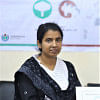Why higher minimum wage is also a woman's issue

International Women's Day is just around the corner. Every year this day brings with it a fresh calculation of the triumphs and losses of the women's movement. We reassess its agenda, its momentum and its boundaries. Discussions about gender flourish – we talk about inequity, sexual violence, rape, acid violence, unequal domestic burdens, discriminatory inheritance laws, maternity leaves, day cares, sexual objectification. This is also a good time to talk about exactly how important economic empowerment is for a woman to live with dignity as an autonomous citizen.
Following the December 2016 protests by garments workers for a higher minimum wage in Ashulia, it has become imperative to evaluate how, if at all, the issue of wages is related to the women's movement. The garments workers had demanded their minimum wage be increased from Tk 5,300 to Tk 16,000. Different labour unions and organisations had joined the protests. A majority of the demonstrators were women. So why was the women's rights movement least affected by their protests? Have women workers disappeared from the women's movement? If that is not the case, why didn't we see women's rights institutions standing in solidarity with the workers in Ashulia? When factory owners and state actors came down on the protesters, oppressed them, attacked them, arrested them and sued them, women too were not spared. Then, why didn't the women's rights activists take to the streets for them?
Who is the fight for women's economic independence for, then? Is it only limited to the struggles for middle-class women? It goes without saying that a women's movement must be intersectional. When the majority of the women are working class, the women's movement cannot advance without including them. Then the question arises – why is the women's movement so disengaged with that of workers?
The ready-made garments (RMG) industry has expanded in the country since the 80's. It is our workers who stitch the "Made in Bangladesh" tag we are so proud of onto the clothes. These clothes then go to the markets in Europe and the United States of America. Our workers are a part of the globalised economy. More than 44 lakh young workers power this industry and women make up around 80 percent of the workforce. This industry allowed us access to the untapped potential of the women labour force.
When women step out of the confines of their homes and enter the apparel industry, they go from being unrecognised for their domestic work to being valued for their labour. The inclusion of all classes of women in the labour force has also caused a shift in paradigm for society, and led to a change in women's lifestyle and agency. Even if it isn't practiced in reality, a clause for equality for women has been introduced in all workspaces. The introduction of women as a worker in the economy is a big milestone for the women's movement.
The more economically independent women get, the louder their voices are. However, even as women earn a living within the framework of a patriarchal state, they haven't fully gained equality in decision-making within the household. How to spend their hard-earned wages is still decided by their husbands or the man of the house. With the threat of economic insolvency hanging over their heads, many women are still afraid to take decisions about their own lives.
It is not easy for a woman worker to sustain her family on wages as low as Tk 5,300. The disengagement of the labour and women's movements has made it very difficult for female RMG workers to take a stronger stance against oppression by their owners and state structures.
Economic independence and stability allow women to make decisions on their own and take stances against all that society puts on her. Yes, it is true that economic empowerment alone cannot bring emancipation for women; it is, however, a prerequisite. In addition, we need to challenge existing patriarchal structures and institute new values by bringing about a change in state policies.
It is not possible to further the movement for an equal and just society while excluding the women of the working class – the women who make up the largest share of the population. So when RMG workers raise their voices demanding an increase in the minimum wage, they are, in fact, fighting for their autonomy. The demand for higher wages is, therefore, a demand of the women's movement as well. When women, who represent the vast majority of their gender in the country, hit the streets, it becomes imperative for women rights activists to join the movement. Women workers are not just oppressed as labour – they are oppressed as women too. The downtrodden women who are attacked on multiple fronts are at the forefront of the struggle for women's emancipation.
History has shown us that the ones who have nothing to lose are forced to be in the frontline of battles. They are brave; they don't fight for change from the comforts of their middle class lives.
Taking all these into consideration, if the battle for economic empowerment is a women's issue, then why weren't rights activists raising their voices too? If the women's movement remains locked within the confines of middle class and upper class then it can't advance like it should. The majority of the women are working class. Therefore not including them into the women's movement also threatens its validity. The movement has to take this seriously and profess solidarity with the RMG workers' struggle.
In 1857 in New York, spinning factory women workers gave their lives to police brutality while trying to protest long hours and inhuman working conditions. Many were arrested. Following that, International Women's Day has been commemorated all over the world since 1911. The women workers who started the journey of March 8 are the predecessors of today's protesters. Bangladeshi workers will play a central role, not only in the women's movement, but in the democratic transformation of society in general. Bangladesh waits for that day.
The writer is a photographer and labour rights activist.

 For all latest news, follow The Daily Star's Google News channel.
For all latest news, follow The Daily Star's Google News channel. 



Comments